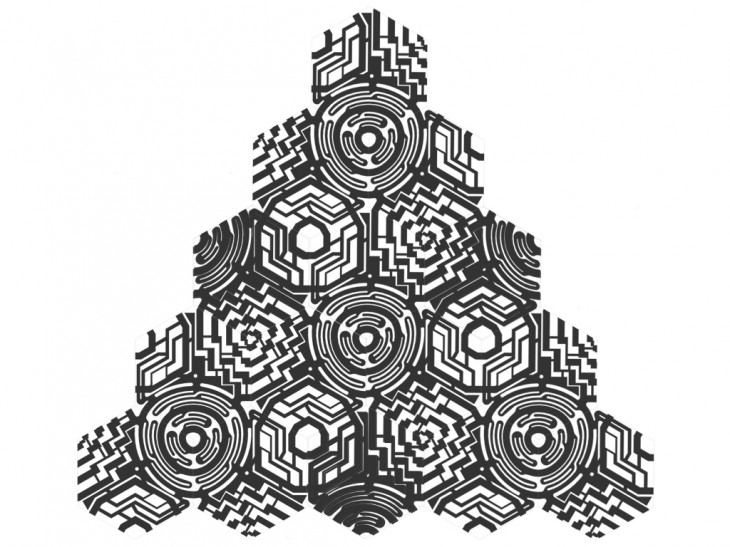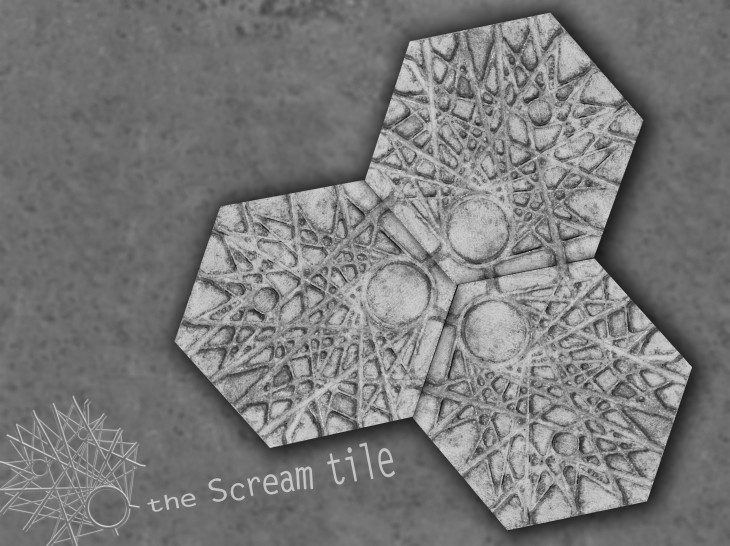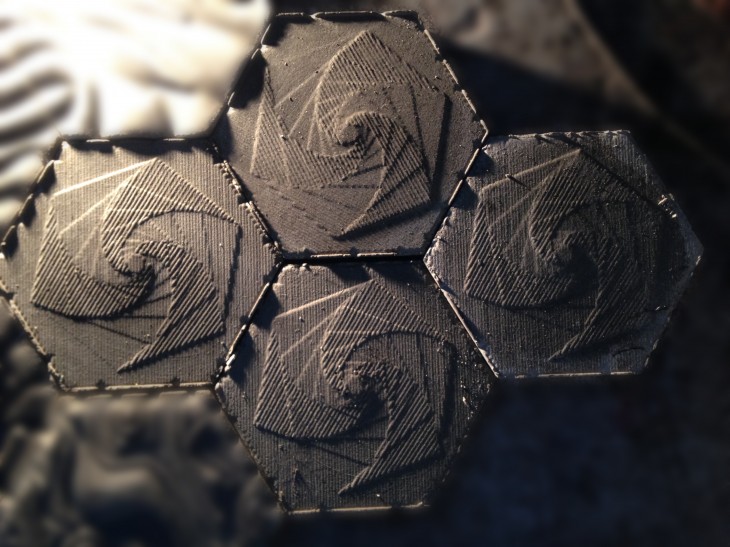ScalingTangents

In this tiled surface design, the pathways channeling water tangentially branch off 3 (repeated) closed loops. Each of these 3 geometric loops are radially-symmetrical about a combinatory corner of the original hexagonal tile. The three loops have 3 different scales of visual prominence. In the least prominent of the 3, the loop becomes secondary to the web of tangent paths surrounding it.
The_ScReam_Tile
By placing three circles and drawing the tangent lines connected to the tile’s predefined edge canals, we managed to create a chaotic grid system of intersections. Piping the lines with variable width provides the desired water flow effect, while the complexity of the final outcome makes each tile cooperate with its adjacent ones, in a way that their edges are diminished.
Read More
CRACKED!
Brief of the exercise:
The exercise was to design a famous Panot hexagonal cement floor tile as designed by Gaudi in 1904.One of the particularity of this design was supposed to be the capacity to be inserted within a larger assembly and to create continuous patterns across several tiles.
Pyramid of Textures
The design of the tiles evolves from the decomposition of the hexagon shape. Starting from the outside, each side of the shape would rotate and reduce its scale approximating the centre. As it moves inwards towards the midpoint, each resulting triangle would also be positioned a step higher. The end result would be similar to a pyramid. Read More



